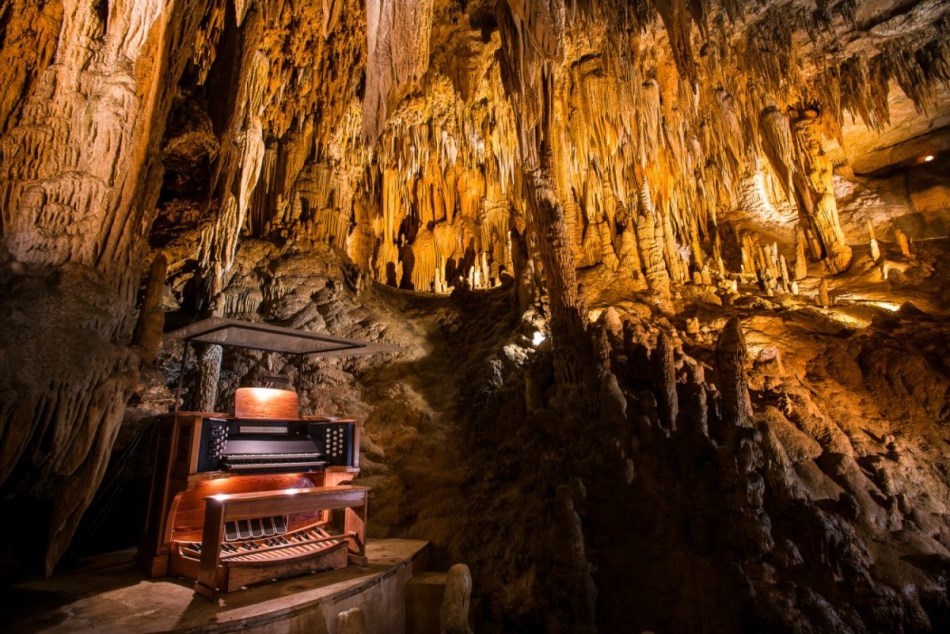Two accounts of Sprinkle's conception of the instrument are known. From the discovery of Luray Caverns in 1878 onward, the favorable attributes of the formations for creating musical tones were well known. One of the earliest references to performances of lithophone music in Luray Caverns comes from the tour led by co-discoverer Andrew Campbell for a group sent by the Smithsonian Institution in 1880. According to a summary of the report incorporated into the earliest printed guides to Luray Caverns, Campbell surprised the group by playing a tune on a formation, probably the one that came to be known as the Organ. By the early 20th century, performances of folk tunes, hymns, and other well-known pieces were a regular part of guided tours. According to the modern guided tour, Sprinkle is said to have conceived the idea for the Great Stalacpipe Organ during one of these performances when he toured Luray Caverns on his son's birthday in 1954.
.jpg)
A variation of the story of the instrument's conception is that Sprinkle's son Robert hit his head on a stalactite, producing a tone that inspired Sprinkle to invent the instrument. This account is the one published in a Meccano Magazine article from 1961 and in an article in the 1959 Rosicrucian Digest.
.jpg)
Sprinkle created the Great Stalacpipe Organ over three years by finding and shaving appropriate stalactites to produce specific notes. He then wired a mallet for each stalactite that is activated by pressing an associated key on the instrument's keyboard. The stalactites are distributed through approximately 3.5 acres (14,000 m2) of the caverns but can be heard anywhere within its 64-acre (260,000 m2) confines.
.jpg)
The organ console was constructed by Klann Organ Supply of Waynesboro, Virginia. The original console design featured volume-control switching cylinders actuated by pedals and ranks of draw-knobs designated "Pedal," "Harmonic," "Solo," and "Echo" which altered the amplifier settings, but this feature was subsequently removed in favor of the aesthetics offered by amplifying every note at a constant level. The organ can be heard throughout the caverns without use of the loudspeaker system, though it is not typically operated this way when open to the public.
.jpg)
According to wikipedia








![[HONORARY PROFESSOR OF RECORD FOR PRACTICE AND EMPIRICAL RESULTS – 2024] RECORD HOLDER CHU BAO QUE (BAC GIANG PROVINCE, VIETNAM)](https://uskings.us/wp-content/uploads/2024/05/IMG_0386-218x150.jpg)